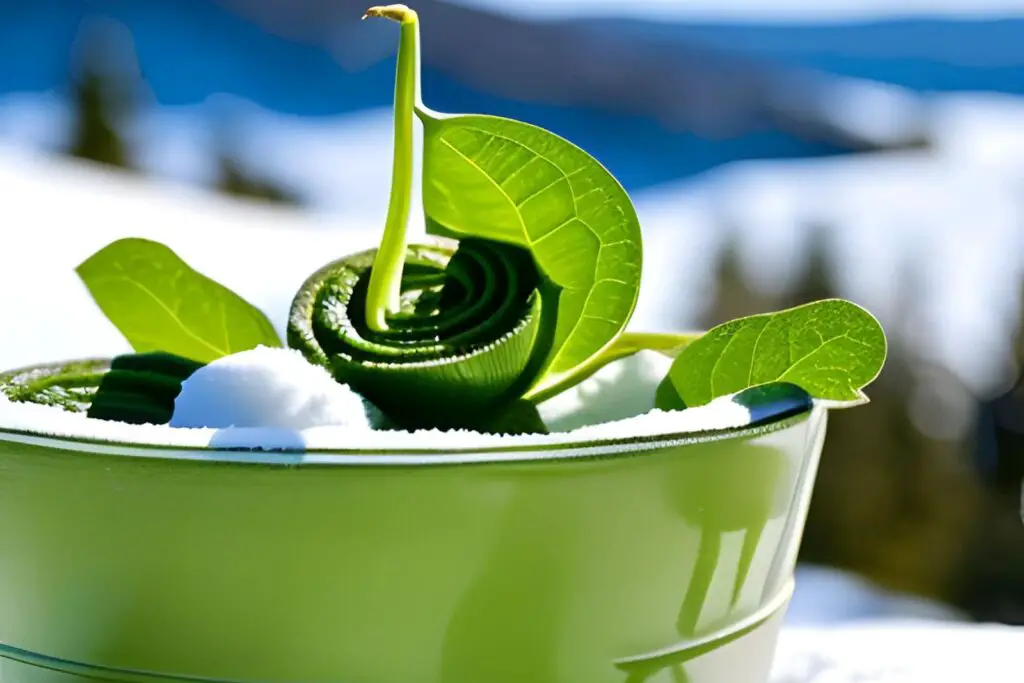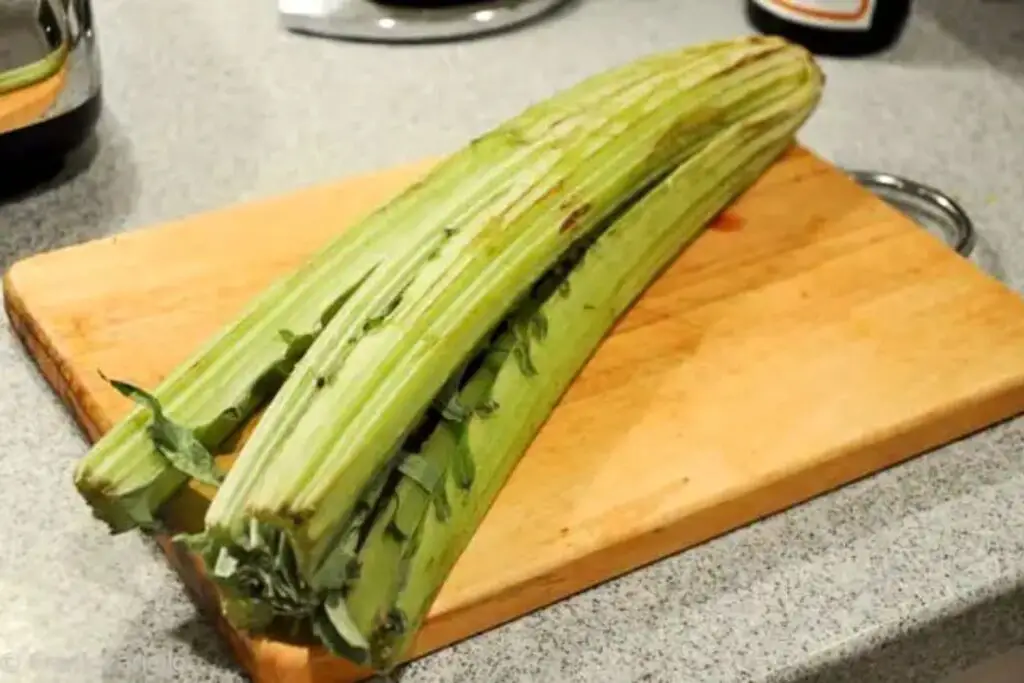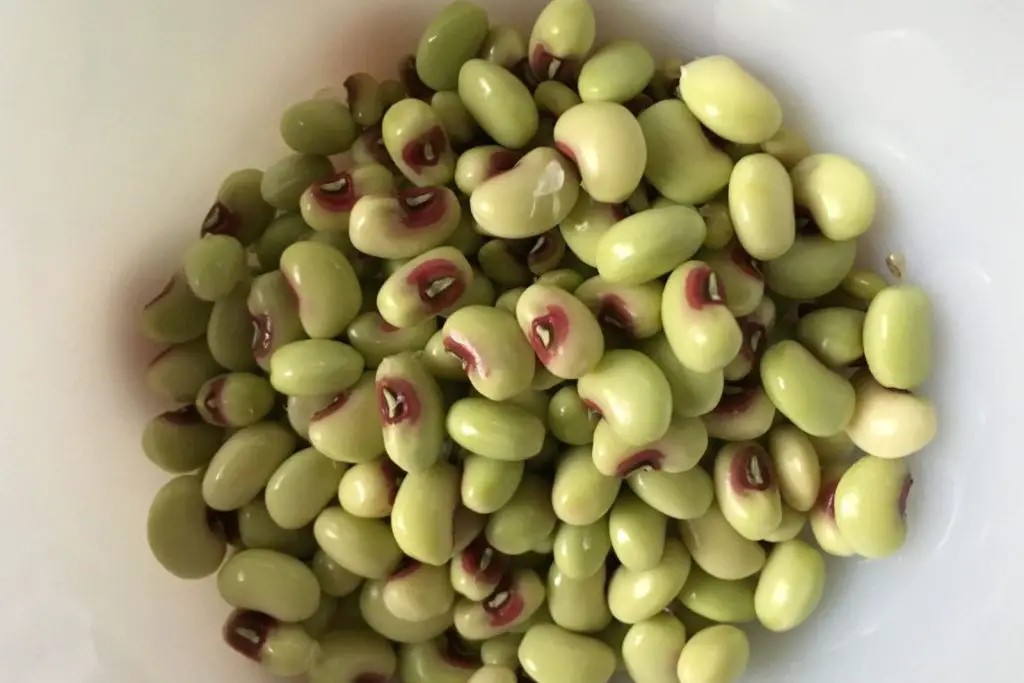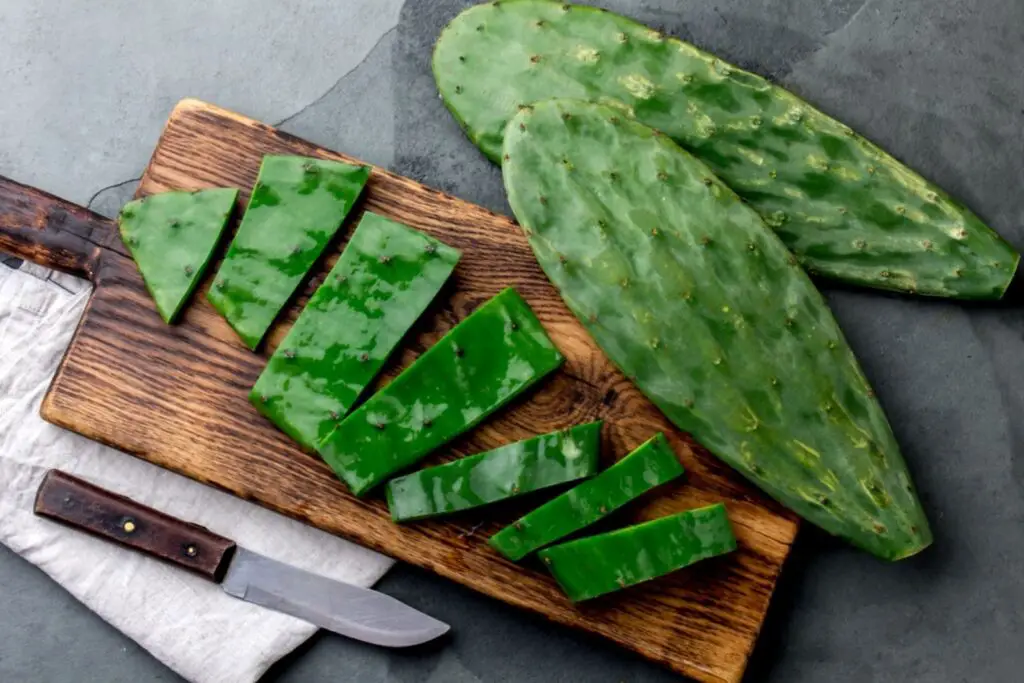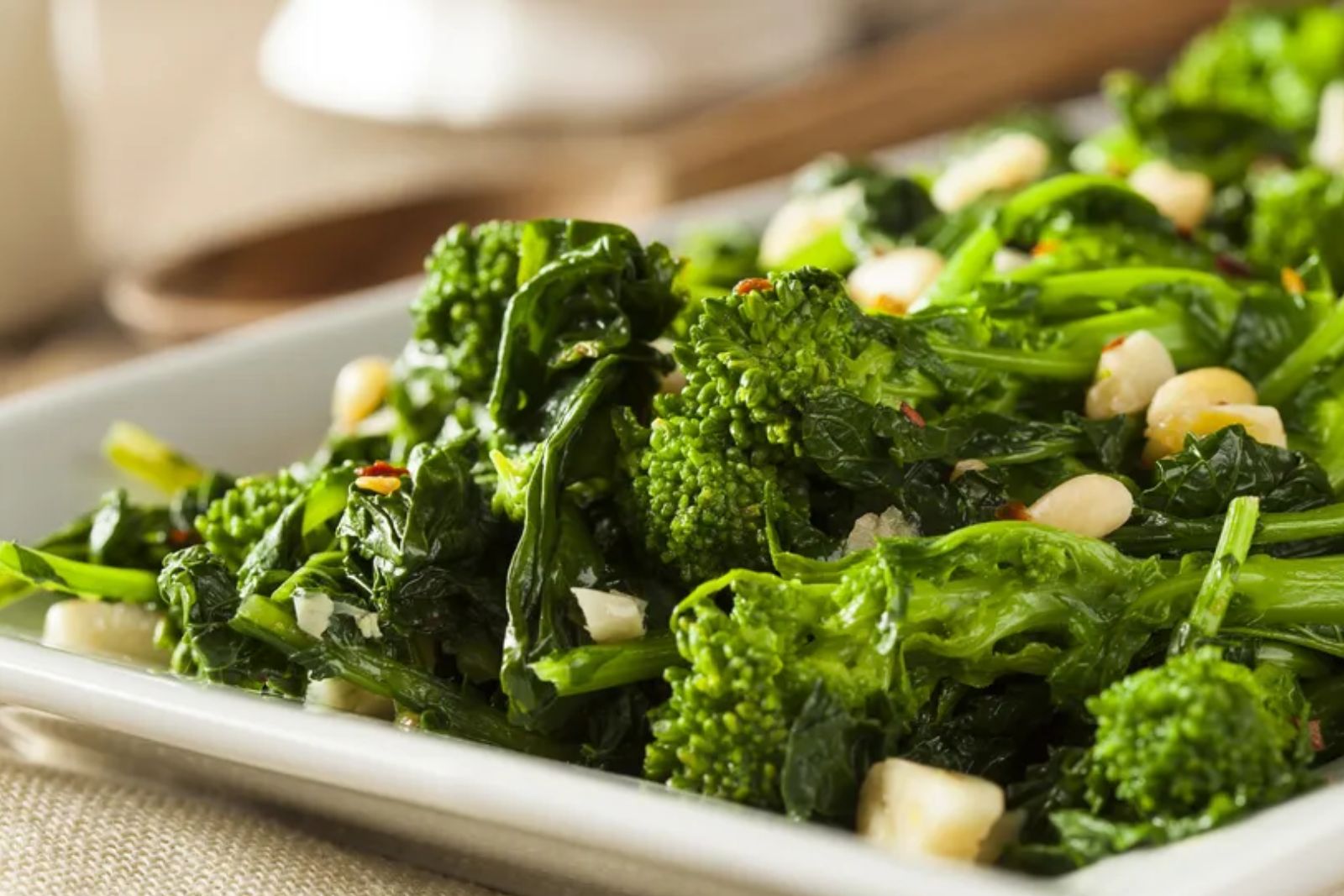
Rabe, also known as broccoli rabe or rapini, is a leafy green vegetable with a slightly bitter taste that pairs well with various dishes. If you have a surplus of fresh rabe or want to preserve its vibrant flavor for future use, freezing can be an effective method. Freezing rabe allows you to extend its shelf life and enjoy its distinct taste and nutritional benefits even when it’s out of season. By following the proper freezing techniques, you can ensure that your frozen rabe retains its texture, color, and flavor. Whether you plan to use it in stir-fries, pasta dishes, or as a side, having frozen rabe on hand provides the convenience of enjoying this versatile vegetable throughout the year.
Here are the simple steps to freeze broccoli rabe:
Step 1: Blanch the broccoli rabe
Blanching is a culinary technique that involves briefly cooking a vegetable in boiling water, followed by immediate immersion in ice water. This process is essential when freezing broccoli rabe because it serves several purposes.
Firstly, blanching helps to preserve the vibrant green color of the broccoli rabe. The high heat of boiling water breaks down the enzymes responsible for the vegetable’s natural pigments. By blanching the broccoli rabe, you can prevent discoloration and ensure that it retains its appealing green hue even after freezing.
Secondly, blanching helps to maintain the flavor of the broccoli rabe. The brief cooking time helps to soften the texture slightly and enhances the natural taste of the vegetable. By blanching it before freezing, you can lock in the flavors and prevent any loss of taste during the freezing and thawing process.
Additionally, blanching is crucial for preserving the nutritional value of the broccoli rabe. Brief exposure to heat helps to deactivate enzymes that can cause the loss of vitamins and minerals over time. By blanching the vegetable, you can retain a higher level of nutrients, making it a healthier option when you eventually consume it after freezing.
The blanching process also serves another important purpose—it helps to clean the broccoli rabe by removing any dirt, bacteria, or pests that may be present. The high temperature of boiling water effectively kills bacteria and other microorganisms, ensuring that the vegetable is safe to consume.
To blanch broccoli rabe, bring a large pot of water to a rolling boil and then add the vegetable. It is important to blanch in small batches to prevent overcrowding the pot, which can result in uneven cooking. The broccoli rabe should be left to cook in the boiling water for about 2 minutes, allowing enough time for the blanching process to take place without overcooking the vegetable.
Can I freeze raw broccoli rabe without blanching it?
It is not recommended to freeze raw broccoli rabe without blanching it first. Blanching is a crucial step that helps preserve the color, flavor, and nutritional value of the vegetable during freezing. Without blanching, raw broccoli rabe may suffer from enzyme activity, leading to undesirable changes in taste, texture, and color.
Step 2: Cool down the blanched broccoli rabe
After blanching the broccoli rabe, it is important to cool it down quickly to halt the cooking process. This is where the ice water bath comes in.
Transferring the blanched broccoli rabe to a large bowl filled with ice water serves several purposes. Firstly, it rapidly lowers the temperature of the vegetable, effectively stopping the cooking process. This step is crucial because it helps to preserve the desired texture of the broccoli rabe.
The ice water bath also helps to maintain the vibrant green color of the broccoli rabe. By rapidly cooling it down, the ice water helps to set the green pigments and prevent any further loss of color during the freezing process. This ensures that the broccoli rabe retains its appealing visual appearance even after being frozen and thawed.
Another benefit of the ice water bath is that it helps to refresh the broccoli rabe, enhancing its crispness and freshness. The cold water revitalizes the vegetable and helps to preserve its natural crunch. This is particularly important if you plan to use the broccoli rabe in dishes where texture plays a key role, such as stir-fries or salads.
To cool down the blanched broccoli rabe, you should leave it in the ice water bath for about 2 minutes or until it is completely cool. During this time, the ice water absorbs the heat from the vegetable, rapidly reducing its temperature. It is important to ensure that the broccoli rabe is fully submerged in the ice water to achieve even cooling.
Is it necessary to cool down the blanched broccoli rabe in an ice water bath?
Yes, it is necessary to cool down the blanched broccoli rabe in an ice water bath. The ice water bath serves to rapidly cool down the vegetable and stop the cooking process, preserving its color, texture, and nutritional value. Skipping this step can result in overcooking and loss of the desired crispness, vibrant color, and nutritional benefits of the broccoli rabe.
Step 3: Package the broccoli rabe
After cooling down the blanched broccoli rabe, it is important to properly package it before freezing. This step helps to protect the vegetable from freezer burn, maintain its quality, and allow for convenient portioning when you need to use it later.
The first step in packaging the broccoli rabe is to drain it thoroughly to remove any excess moisture. Excess water can lead to ice crystals forming during freezing, which can degrade the texture and quality of the vegetable. By ensuring the broccoli rabe is well-drained, you can minimize the risk of freezer burn and maintain its optimal texture.
Next, you have the option to divide the broccoli rabe into portion sizes that suit your needs. This step allows for more convenient use in the future, as you can take out only the desired amount without having to thaw the entire batch. Consider the typical amounts you would use in your recipes and portion the broccoli rabe accordingly.
When it comes to freezing the broccoli rabe, you have a choice between freezing it in individual servings or as a whole bunch. Freezing in individual servings can be beneficial if you often cook for one or if you prefer the convenience of pre-measured portions. On the other hand, freezing it as a whole bunch may be suitable if you frequently use larger amounts in your recipes.
To package the broccoli rabe, it is important to use airtight freezer-safe containers or resealable freezer bags. These containers help to protect the vegetable from exposure to air, which can lead to freezer burn and the loss of flavor and quality. Make sure the containers or bags are specifically designed for freezer storage, as they are made with materials that are resistant to low temperatures.
When placing the broccoli rabe portions into the containers or bags, ensure there is minimal air inside. Excess air can cause ice crystals to form and potentially lead to freezer burn. Press out any excess air before sealing the containers or bags tightly.
Step 4: Label and date the containers
Labeling and dating the containers or bags of frozen broccoli rabe is a crucial step in the freezing process. It helps you keep track of the contents and ensures that you can easily identify and use the vegetable when needed. Here’s why labeling and dating are important:
- Easy identification: By labeling each container or bag with the contents, such as “Broccoli Rabe,” you can quickly identify it among other frozen items in your freezer. This saves you time and prevents confusion when searching for specific ingredients.
- Preventing mix-ups: If you freeze different vegetables or foods, labeling prevents mix-ups. It’s easy to forget the contents of containers once they are frozen, so clear labeling ensures that you know exactly what you have and can choose the right ingredient for your recipes.
- Freshness monitoring: Adding the date of freezing to the label allows you to track the freshness of the frozen broccoli rabe. Over time, frozen vegetables may experience quality degradation, such as flavor and texture changes. By dating the containers, you can keep track of how long the broccoli rabe has been frozen and prioritize using the oldest ones first.
- Rotation and usage planning: Properly labeling and dating your frozen broccoli rabe enables you to practice first-in, first-out (FIFO) rotation. FIFO ensures that you use the oldest packages first, minimizing the chances of food waste and maintaining optimal quality. By having the date on the label, you can plan your meals accordingly and ensure efficient usage of the frozen broccoli rabe.
To label the containers or bags, use adhesive labels, masking tape, or freezer-safe marker pens. Write the contents clearly, such as “Broccoli Rabe,” on each label or tape. Additionally, note the date of freezing to establish a timeline for consumption. Place the labels in a visible spot on the containers or bags for easy reference.
Step 5: Freeze the broccoli rabe
Freezing the properly packaged broccoli rabe is the final step in the process of preserving its freshness and quality. It is important to follow these guidelines to ensure optimal storage conditions and maintain the integrity of the vegetable. Here’s why freezing the broccoli rabe correctly is essential:
- Freezer temperature: Ensure that your freezer is set at or below 0°F (-18°C). This low temperature is necessary for safe and long-term storage of frozen foods, including broccoli rabe. Keeping the freezer at this temperature helps to maintain the quality and nutritional value of the vegetable, preventing bacterial growth and maintaining its freshness.
- Single layer freezing: Arrange the containers or bags of broccoli rabe in a single layer when placing them in the freezer. This arrangement allows for faster and more efficient freezing. When items are in a single layer, the cold air circulates around them more evenly, promoting uniform freezing and reducing the risk of partial thawing or inconsistent freezing.
- Solid freezing: It is important to freeze the broccoli rabe until it is completely solid. Freezing the vegetable solid helps to maintain its texture and quality. If the broccoli rabe is only partially frozen, it may develop ice crystals or suffer from freezer burn, resulting in a loss of flavor and texture.
- Stacking for space-saving: Once the broccoli rabe portions are fully frozen, you can stack the containers or bags to save space in the freezer. Stacking allows you to maximize the storage capacity of your freezer, making it easier to organize and store other frozen items. However, it is important to ensure that the portions are fully frozen before stacking them to avoid any compression or damage to the packages.
Step 6: Thaw and use the frozen broccoli rabe
Thawing the frozen broccoli rabe properly is crucial to ensure that it retains its quality and safety when it comes time to use it. Here’s how to thaw and use the frozen broccoli rabe:
- Refrigerator thawing: The best method for thawing frozen broccoli rabe is to transfer the desired portion from the freezer to the refrigerator. Place the packaged broccoli rabe in the refrigerator and allow it to thaw slowly and evenly. Thawing in the refrigerator helps to maintain the vegetable’s texture, flavor, and nutritional value.
- Overnight thawing: Thaw the broccoli rabe overnight or for at least a few hours in the refrigerator. The exact time required for thawing will depend on the size and thickness of the portion. Thawing overnight ensures that the vegetable thaws gradually and uniformly without any risk of bacterial growth. It is important to note that larger portions may require more time to thaw completely.
- Avoid room temperature thawing: Avoid thawing the broccoli rabe at room temperature, as this can promote bacterial growth. Leaving the vegetable at room temperature for an extended period allows the outer layers to thaw while the center remains frozen, creating an environment conducive to bacterial growth. To ensure food safety, always thaw the broccoli rabe in the refrigerator.
- Cooking after thawing: Once the broccoli rabe has thawed completely, it is ready to be cooked according to your preferred recipe. You can use it in stir-fries, pasta dishes, soups, or any other recipe that calls for broccoli rabe. Thawed broccoli rabe can be prepared and cooked in the same way as fresh broccoli rabe.
It’s important to note that thawed broccoli rabe may be slightly softer than fresh broccoli rabe due to the freezing and thawing process. However, it should still maintain its flavor and nutritional value.
If you need to use the broccoli rabe immediately and don’t have time for overnight thawing, you can thaw it in a sealed plastic bag under cold running water. This method allows for quicker thawing, but it should be done carefully to prevent water from getting into the packaging and compromising the quality of the vegetable.
Other related questions
How long can I store frozen broccoli rabe?
You can store frozen broccoli rabe for up to 8 to 12 months without a significant loss in quality. However, for the best flavor and texture, it is recommended to consume it within the first 3 to 6 months. Over time, frozen broccoli rabe may experience slight changes in taste and texture due to freezer storage. Proper packaging, labeling, and storage at a constant freezer temperature of 0°F (-18°C) or below are crucial for maintaining its quality throughout the storage period. Regularly checking for any signs of freezer burn or deterioration is also important to ensure the best eating experience.
Can I refreeze the broccoli rabe that has been previously thawed?
It is generally not recommended to refreeze broccoli rabe that has been previously thawed. When you thaw frozen broccoli rabe, its texture and quality may be compromised, and refreezing can further deteriorate its overall condition. The freeze-thaw cycle can cause moisture loss, resulting in a mushy texture and diminished flavor. Additionally, each freeze-thaw cycle increases the risk of bacterial growth, potentially impacting food safety. To ensure the best quality and safety, it is advisable to consume the thawed broccoli rabe rather than refreezing it.
How do I know if my frozen broccoli rabe has gone bad?
To determine if your frozen broccoli rabe has gone bad, there are several signs to look for. First, check for any noticeable changes in color, such as browning or discoloration. Second, examine the texture of the vegetable. If it appears mushy or has ice crystals, it may have suffered from freezer burn or loss of quality. Third, smell the broccoli rabe. If it emits a foul or off-putting odor, it is a clear indication of spoilage. Lastly, taste a small portion of the thawed broccoli rabe. If it has an unpleasant or rancid taste, it is best to discard it to avoid any potential foodborne illnesses.
Can I use frozen broccoli rabe with the fresh ones?
Yes, you can use frozen broccoli rabe alongside fresh ones in your recipes. Mixing frozen and fresh broccoli rabe can provide a convenient option when fresh produce is not readily available or is out of season. However, it’s important to note that the texture of the frozen broccoli rabe may be slightly different from the fresh one, as freezing can soften the vegetable. Adjusting cooking times and methods may be necessary to ensure both types of broccoli rabe are cooked evenly. Experimenting with different combinations and ratios of fresh and frozen broccoli rabe can help you achieve the desired texture and flavor in your dishes.
Can I freeze cooked broccoli rabe that has been mixed with other ingredients or sauces?
Yes, you can freeze cooked broccoli rabe that has been mixed with other ingredients or sauces. However, it’s important to consider the other ingredients and sauces when deciding to freeze the dish. Some ingredients or sauces may not freeze well and can affect the texture and flavor of the dish upon thawing. It’s recommended to test a small portion before freezing a larger batch to ensure the desired quality and taste after freezing and reheating.
Can I freeze broccoli rabe for longer than three months?
While broccoli rabe can technically be frozen for longer than three months, its quality may begin to deteriorate over time. Freezing for longer durations can lead to texture changes and potential loss of flavor and nutritional value. To enjoy the best quality, it is advisable to consume frozen broccoli rabe within the first three months, ensuring it retains its taste and overall appeal.
Can I freeze broccoli rabe stems along with the leaves?
Yes, you can freeze broccoli rabe stems along with the leaves. Both the stems and leaves of broccoli rabe can be frozen together without any issues. However, keep in mind that the stems may have a slightly different texture compared to the leaves after freezing, so adjust cooking times accordingly to ensure they are cooked to your desired tenderness.
What is the recommended portion size for freezing broccoli rabe?
The recommended portion size for freezing broccoli rabe depends on your personal preferences and intended use. However, it is generally recommended to divide the broccoli rabe into portion sizes that you would typically use in a single meal or recipe. This could be individual serving sizes or larger portions if you prefer to freeze them as a whole bunch. Smaller portion sizes may offer more flexibility in terms of portion control and thaw only what you need at a time.

